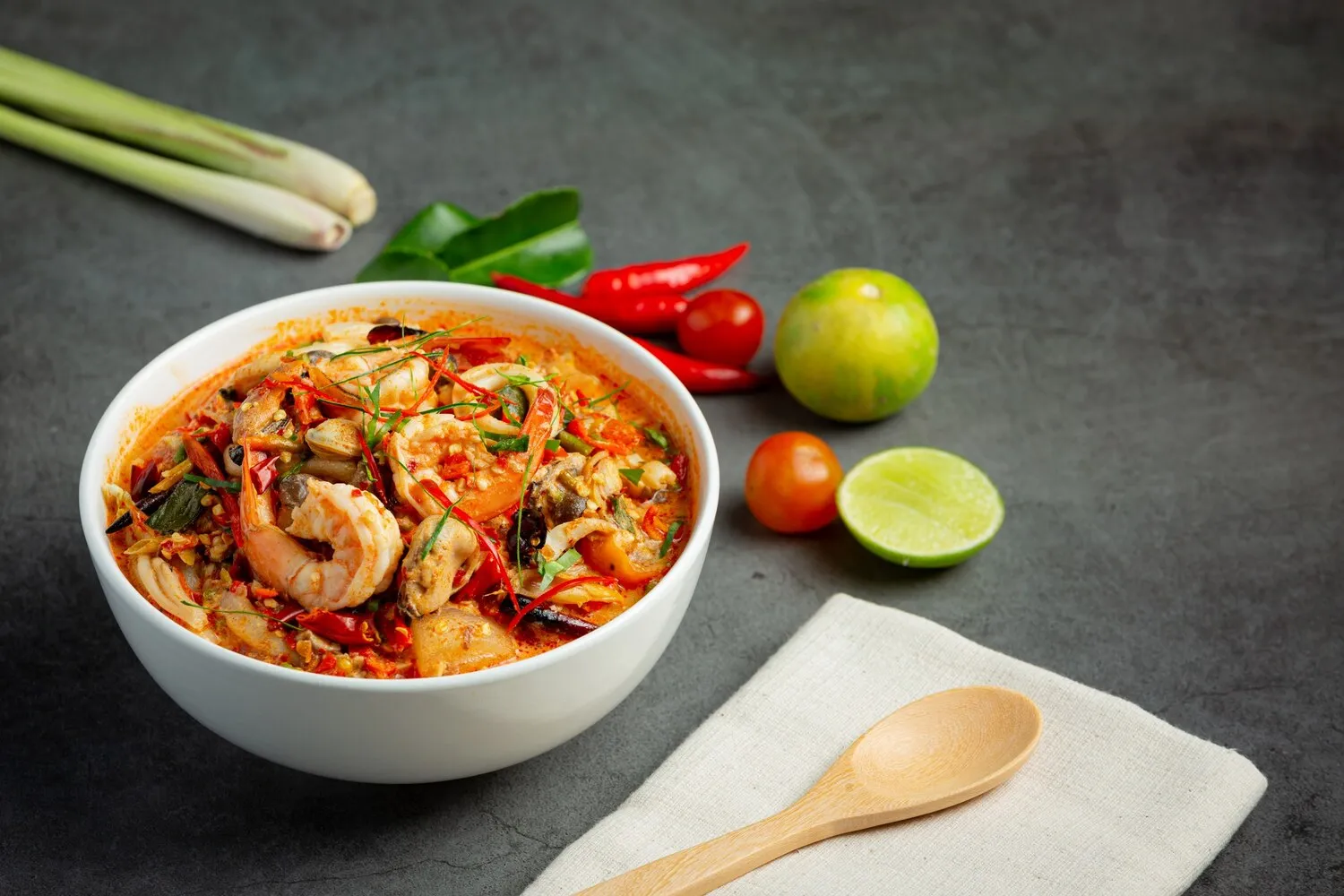
Matzo Ball Soup
Classic matzo ball soup.
Nutrition Facts
* The % Daily Value (DV) tells you how much a nutrient in a serving of food contributes to a daily diet. 2,000 calories a day is used for general nutrition advice.
Siegel's Bagelmania
Matzo ball soup evolved from Central and Eastern European Jewish cuisine, reflecting both Ashkenazi culinary traditions and limitations imposed by Jewish dietary laws (Kashrut). The dish likely originated as a way to utilize leftover matzo meal, a staple during Passover, combined with readily available ingredients like chicken and vegetables. The quenelle or dumpling-like precursor to the matzo ball adapted over time, becoming the light, fluffy ball we know today. Influences from other cuisines in the region, such as German dumplings or Polish soups, may have also played a role.
Matzo ball soup is deeply ingrained in Jewish culture, particularly within Ashkenazi communities. It is more than just a meal; it represents comfort, tradition, and healing, often associated with holidays and family gatherings.
Passover Staple
While enjoyed year-round, matzo ball soup is a traditional dish during Passover, adhering to dietary restrictions that prohibit leavened bread. It is often served at the Seder meal.
Comfort Food
Known as 'Jewish penicillin,' matzo ball soup is often prepared and consumed during times of illness, believed to have healing properties due to its warmth, hydration, and easily digestible ingredients.
Family Tradition
Recipes are often passed down through generations, with each family having its own unique variations and techniques for achieving the perfect matzo ball. It is a dish that evokes memories and a sense of belonging.
Symbolism
The round shape of the matzo ball can be interpreted as a symbol of wholeness and continuity within Jewish tradition.
Matzo ball soup offers a comforting and savory flavor profile, balancing the richness of chicken broth with the subtle taste of matzo balls and the freshness of vegetables.
The dominant flavor is the savory chicken broth, often enhanced with mirepoix (carrots, celery, and onion) and herbs like dill or parsley. The matzo balls themselves are relatively mild, absorbing the flavor of the broth and providing a comforting, starchy element. Some variations include garlic, ginger, or other spices to further enrich the broth's flavor. The vegetables contribute sweetness and freshness, creating a balanced and nourishing soup.
Matzo Meal Quality
Use a good quality matzo meal for the best texture. Some brands may be coarser than others, affecting the final result.
Egg Ratio
The egg-to-matzo meal ratio is crucial. Too many eggs will result in dense, rubbery matzo balls. Follow the recipe carefully.
Refrigeration
Refrigerating the matzo ball mixture for at least 30 minutes (or longer) allows the matzo meal to absorb the liquid, resulting in a firmer and more cohesive ball that holds its shape during cooking.
Gentle Cooking
Simmer the matzo balls gently in the broth, rather than boiling them vigorously. This prevents them from becoming tough.
Don't overcrowd the pot
Make sure the matzo balls have room to expand in the pot. Cook in batches if necessary.
Explore additional Soup dishes and restaurants
Explore SoupDiscover top dining spots and culinary experiences in Las Vegas.
Explore Las VegasLearn more about the food culture, restaurant scene, and culinary heritage of United States.
Explore United States